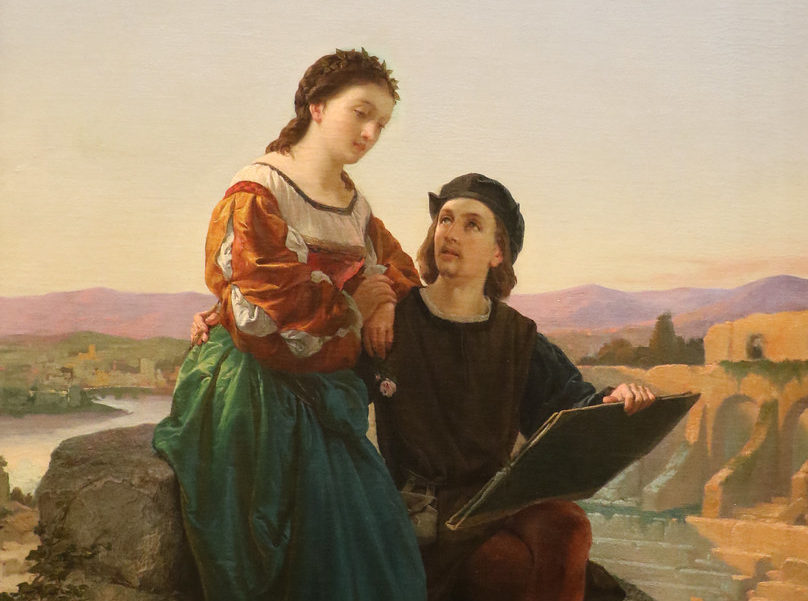Italy: La Fornarina – who was Raphael’s mysterious lover?

Rome: Raphael’s portrait is one of the most popular paintings at Palazzo Barberini in Rome. La Fornarina, Raphael’s celebrated portrait of his lover and muse, was completed between 1518 and 1519, a year before the tragic death of the High Renaissance genius aged 37.
During summer 2020 the masterpiece featured in Rome’s blockbuster Raphael exhibition, on the 500th anniversary of the artist’s death, before returning to Palazzo Barberini, home to Italy’s collection of ancient art.
Despite being among the most iconic pieces of Western art, and one of the gallery’s most popular works, there is little concrete information about the subject of the painting who has captivated viewers and been shrouded in legend for 500 years.
The woman traditionally identified as La Fornarina was Margherita Luti, the “baker’s daughter”, hence the portrait’s name.
However some historians maintain that, far from being the daughter of a baker, “La Fornarina” was in fact a courtesan who traded under an unusual “stage name.”
Experts are also divided over her home address, where Raphael allegedly first spotted her gazing out the window while he walked through the streets of Rome.
Some historians say she lived on Via di S. Dorotea 19; others believe she lived on Vicolo del Cedro, or on Via del Governo Vecchio 48, where an inscription on one of the interior walls reads: “Here lived the one who was loved by Raffaello Sanzio.”
Giorgio Vasari, the 16th-century art historian, had a less romantic account of their first meeting, believing that Raphael first set eyes on the young woman as she bathed naked in the river Tiber.
Whatever the manner of their first encounter, Raphael became infatuated with La Fornarina who, by all accounts, also fell passionately in love with the artist.
Their secret love affair had to be hidden, however, as Raphael was already engaged to be married to Maria Bibbiena, the niece of his rich and powerful patron, a Roman cardinal.
The artist postponed the wedding date continuously for six years, immortalising his true love in his paintings instead.
Raphael’s infatuation with La Fornarina was such that he could not concentrate on an important commission – decorating the Villa Farnesina in Trastevere.
The artist’s patron, Agostino Chigi, solved the problem by allowing Raphael’s lover to move into the palace as the artist completed his celebrated frescoes.
Raphael’s portrait of La Fornarina was considered provocative at the time, as a bracelet worn by the bare-breasted woman featured the artist’s signature: Raphael Urbinas.
It is believed that Margherita Luti modelled for hundreds of drawings by Raphael and, in addition to the La Fornarina portrait, she also posed for the more demure, and fully-clothed, Lady with the Veil (1516), among other paintings.
When Raphael died on 6 April 1520, and was buried in the Pantheon, theories abounded over the cause of his early death.
Vasari made the sensational claim that Raphael died as a result of a night of excessive sex with his mistress. Popular myth dictates that the artist caught pneumonia (others say syphillis or malaria), after making late night visits in the freezing cold for “amorous pleasures.”
Recent research suggests that Raphael’s death was brought about after “the best doctors in Rome, sent by the pope” wrongly prescribed blood-letting – either through incisions or leeches – fatally weakening the feverish artist.
Whatever the cause, Raphael’s heartbroken lover chose to enter the convent of S. Apollonia in Trastevere, and – according to legend – was never seen again.
As for the painting itself, La Fornarina was purchased by the powerful Barberini family, appearing in their inventories from 1642, and was transferred in the 1970s to the Borghese Gallery, before returning subsequently to Palazzo Barberini.
In 2001, when x-ray analysis was carried out on the painting, experts were amazed to uncover a hidden ruby ring on the third finger of La Fornarina’s left hand, leading to speculation of a secret engagement between Raphael and his adored model.
The poignant discovery of the painted-over ring, obscured for almost five centuries, reduced art historians to tears.





